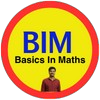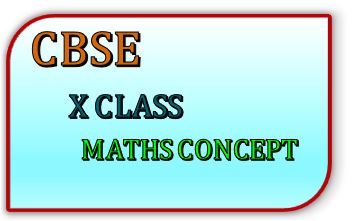CBSE 10th Class Maths Concept
CBSE 10th Class Maths: This concept note is designed for CBSE 10th class maths students, This concept notes is to help students for the CBSE board examination and other competitive exams also…
CBSE 10th Class Maths
1. REAL NUMBERS
Rational number: The number, which is written in the form of is called a rational number. It is denoted by Q.
Irrational number: – the number, which is not rational is called an irrational number. It is denoted by Q’ or S.
Prime number: – The number which has only two factors 1 and itself is called a prime number. (2, 3, 5, 7 …. Etc.)
Composite number: – the number which has more than two factors is called a composite number. (4, 6, 8, 9, 10… etc.)
Co-prime numbers: – Two numbers are said to be co-prime numbers, if they have no common factor except 1. [Ex: (1, 2), (3, 4), (4, 7) …etc.]
Euclid division lemma: – For any positive integers a and b, then q, rare integers exist uniquely satisfying the rules a = bq + r, 0 ≤ r < b.
To find H.C.F by using Euclid’s division lemma:
- For any two integers a and b (a > b). Apply Euclid division lemma, to a and b, we find whole numbers q and r such that a = bq + r, 0≤r<b.
- If r = 0, b is the H.C.F of a and b. If r≠ 0, apply Euclid division lemma, to b and r.
- Continue the process till the remainder is zero. The divisor at this stage is the required H.C.F.
Note: –
- Euclid division lemma also called a division algorithm.
- Euclid division lemma is stated for only positive integers, it can be extended for all integers except 0.
The fundamental theorem of arithmetic:
Every composite number can be expressed as a product of primes, and this factorization is unique, apart from the order in which prime factors occur.
Ex: – 12 = 2 ×2× 3, 15 = 3× 5 and so on.
CBSE 10th Class Maths Concept
To find LCM and HCF by using the prime factorization method:
H.C.F = product of the smallest power of each common prime factor of given numbers.
L.C.M = product of the greatest power of each prime factor of given numbers.
- ‘p’ is a prime number and ‘a’ is a positive integer, if p divides a2, then p divides a.
- Decimal numbers with the finite no. of digits is called terminating Decimal numbers with the infinite no. of digits is called non-terminating decimal. In a decimal, a digit or a sequence of digits in the decimal part keeps repeating itself infinitely. Such decimals are called non-terminating repeating decimals.
Decimal expansion of rational numbers:
Decimal expansion of rational numbers is either terminating or non-terminating repeating (recurring)decimals.
Ex: – 1.34, 2.345, 1.2222… and so on.
In p/q, if the prime factorization of q is in form 2m 5n, then p/q is a terminating decimal. Otherwise non-terminating repeating decimal.
Decimal expansion of irrational numbers:
Decimal expansion of irrational numbers is non-terminating decimals.
Ex: – 1.414…., 1.314….
TS 10th class maths concept (E/M)
PDF Files || Inter Mathematics 1A and 1B




